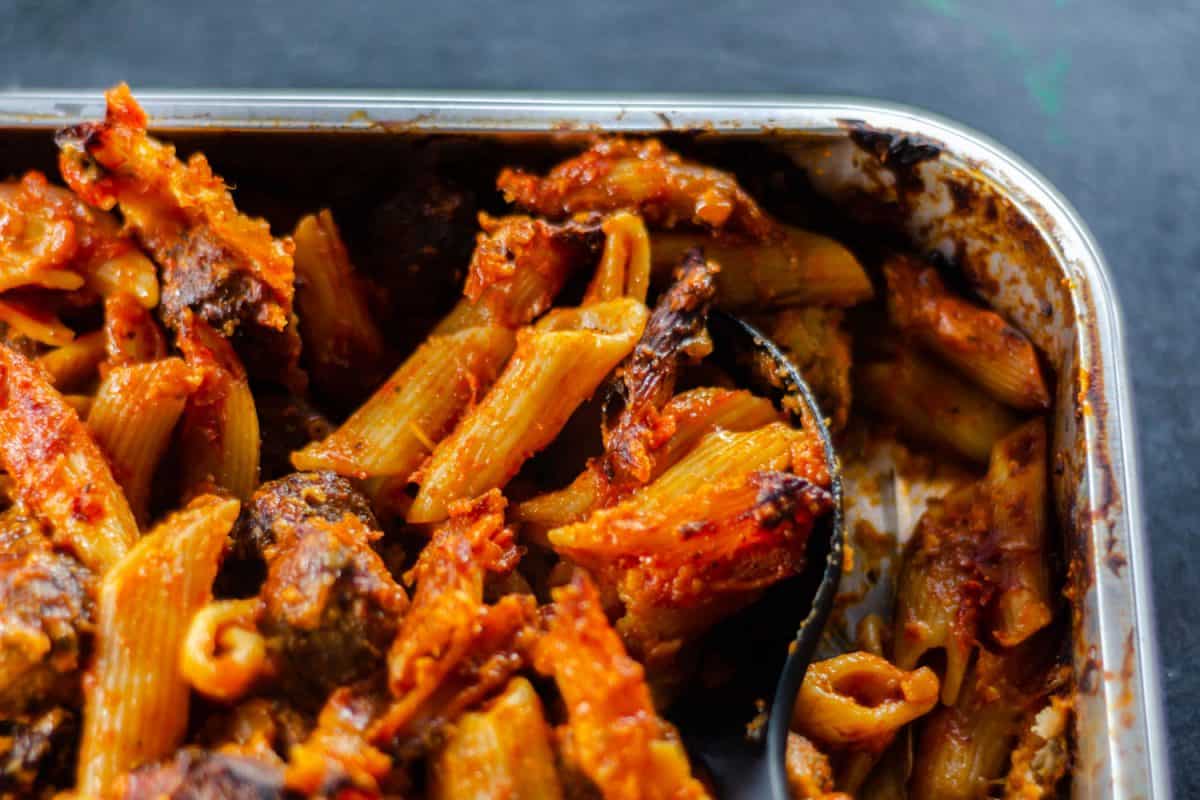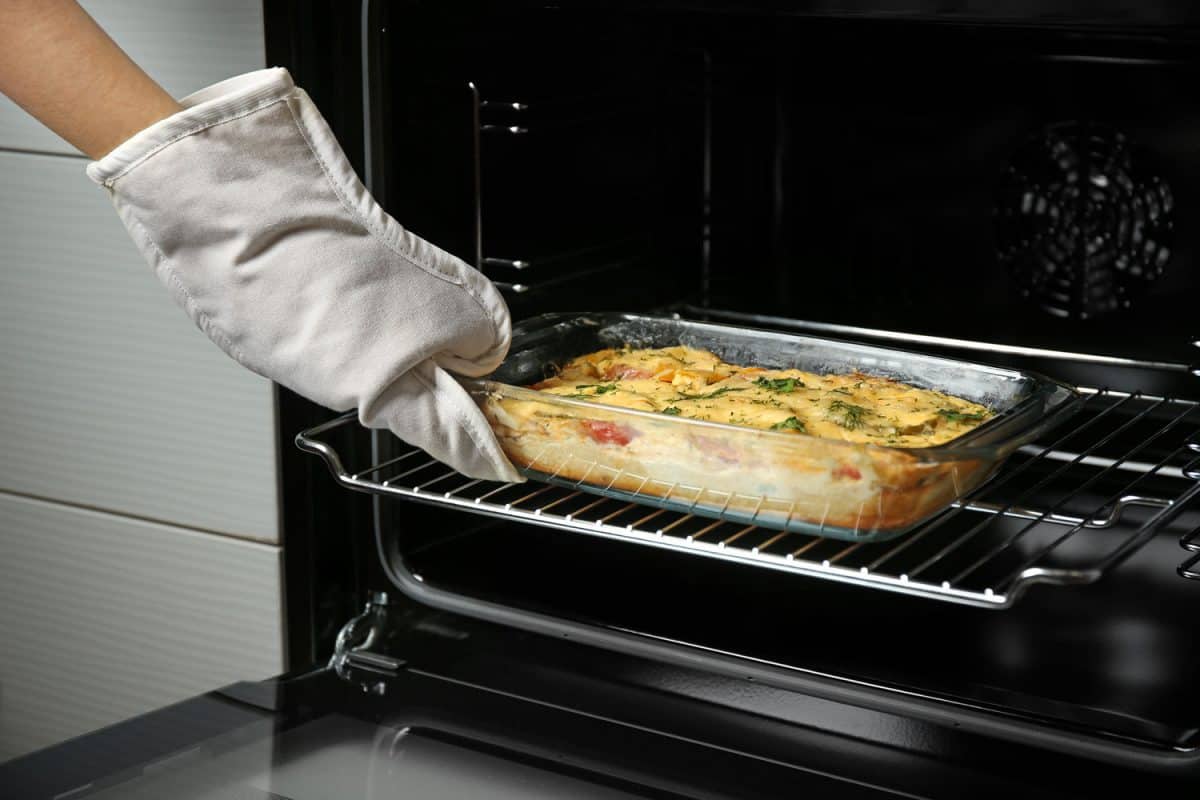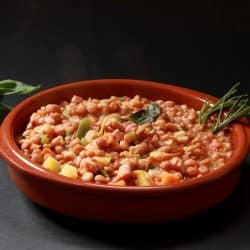You're looking around at all the ingredients lying around in your fridge and pantry, trying to figure out how to throw it all together for dinner. Then you get the idea to make a casserole. Except you haven't made one recently and forget some basic casserole-making components --most importantly, what temperature to cook a casserole. Not to worry, we've researched temperatures to preheat and cook a variety of casseroles to help you get dinner ready.
On average, the best temperature to cook a casserole is 350 degrees Fahrenheit, or 176 degrees Celcius. Assuming you are making your casserole from scratch without a recipe at the ready, a good rule of thumb is keeping the temperature above 300 degrees Fahrenheit, but not over 400 degrees; otherwise, the casserole will not cook thoroughly.
Now that you know what temperature to bake your casserole, you may be wondering what else to keep in mind for a delicious, one-dish meal. How long should it cook? Should you cover the casserole? Please stay with us as we suggest tricks of the trade so you can have dinner on the table in no time!

Do you cover a casserole in the oven?

Yes, do cover the casserole but just for a little while. When the casserole is covered, it helps keep the steam and juices securely inside, so your meal doesn't dry out. It also assists with a more even and thoroughly cooked dish. However, if you keep the cover on for too long, you will end up with a mushy mess!
You want to make sure some of the edges brown a bit, and the top gets a little crispy, so it is best to take the cover off of your casserole about halfway through cooking for the best result. Something to remember, covering your casserole is not a shortcut for faster cooking --it's a shortcut to a soggy dinner.
Click here to see silicone, oven-safe casserole dish lids on Amazon.
Does a Casserole Cook Faster Covered or Uncovered?
It's always best to follow the recipe recommendations for covering or uncovering your casserole while baking. However, as we've just mentioned, a cover will keep steam inside the dish. Therefore, if you want to hasten the cooking process covering should cook the casserole more quickly because steam and excess heat is trapped within. Just remember to uncover just prior to removing from the oven after you've sped up the bake, if you want the result to have a crisp top and allow any excess moisture to dry before serving.
How can you thicken a casserole in the oven?
If your casserole is looking runny and you are getting close to the end of your cooking time, do not panic! In a small pot on the stove, mix a quick 1:1 ratio of flour and butter over low heat. Pour over your casserole, and it will help to thicken during the remainder of the bake. The flour and butter mingle with the juices and thicken over time.
As a bonus, if you have any leftover thickening mixture, it can be stored in the freezer. It is extra handy if stored in ice cube trays, so you can just pop out a small amount as needed.
Can you overcook a casserole?

There is no real way to overcook a casserole as long as there is plentiful liquid remaining in the dish. This is another reason to make sure you cover your casserole for at least the first portion of cooking as not to dry it out too quickly. That being said, if you have your casserole in the oven for hours and hours, the individual components may start to break down and get very soft, making the casserole difficult to stay on your fork. Meat and vegetables, in particular, are prone to this, and while everything will taste just fine, the texture may leave a lot to be desired.
The average cook time should be about two hours, total. Ideally, cover it for an hour and then uncover it during the final hour to crisp. Depending on the casserole ingredients, this cooking time may vary; an added variable to your cook time will be the thickness of layered ingredients in the dish. If your casserole is thin, a higher temp but shorter cook time may work best. If your casserole is on the thicker side, low and slow is the name of the game.
How can you tell when the casserole is done?
You will want to at least make sure that the internal temperature is hot enough to kill any dangerous bacteria, so it needs to reach at least 165 degrees Fahrenheit. Check with a cooking thermometer. Some visual cues include a browned and crispy top and/or thick, bubbling sauce bubbling. You will want to make sure there is not too much runny liquid, so if your casserole is still a little too wet around the end of cooking, take off the cover and raise the temperature a few degrees so that the liquid may evaporate.
Click here to see this cooking thermometer on Amazon.
In Conclusion
Your casserole is brown and crispy on top, with firm edges and a perfectly thick sauce bubbling ever so slightly in the middle. You nailed it tonight! Now kick your feet up to relax and enjoy!
For more casserole baking tips, check out our related posts:
How Deep Should A Casserole Dish Be?
How To Cook Rice In A Casserole Dish








